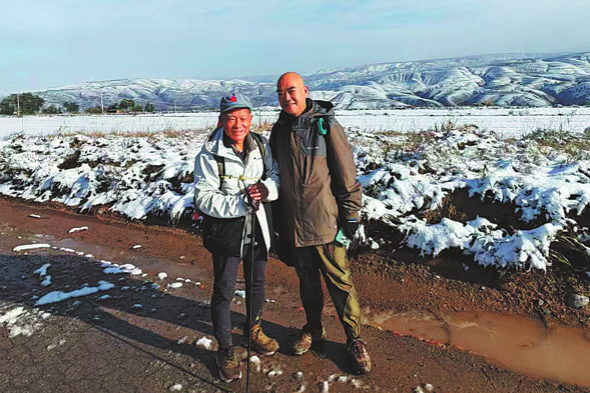Survey on black lung disease to help prevent occupational hazards


Aware that murky and incomplete statistics have hampered efforts to prevent black lung disease and protect the health of coal miners, China is launching a nationwide survey to determine the number of workplaces where there are occupational hazards, the risk factors involved and the types of workers affected, the National Health Commission's occupational health department said.
The last such nationwide survey was for a study conducted in 1986 that looked at the extent of dust hazards and the number of black lung disease patients in China.
In the past three decades, regular examinations of occupational risks and health checks focusing on occupational diseases have been more narrowly focused, and department officials said the lack of reliable and updated nationwide data had made it harder for authorities to evaluate the efficacy of policies and supervise workplaces.
According to a report released in February by Love Save Pneumoconiosis, a charity foundation dedicated to helping and treating workers with black lung disease, some employers have prioritized profits and production over the protection of workers.
Another factor in the prevalence of black lung-the most common occupational disease in China-is that the migrant workers who account for most cases tend to skip regular health checks.
"The new survey, centering on three key industries-coal mining, manufacturing and the production of electricity, gas and water-is expected to provide scientific evidence for future work aimed at stepping up prevention of occupational diseases, including those caused by dust," said Wu Zongzhi, the department's director.
Black lung disease is most common in the coal mining, metallurgical and construction materials sectors. The most severe form of the disease causes progressive massive fibrosis that leaves victims struggling to breathe.
The department said on-site investigations and the submission of probe results to local health authorities will be completed by August, with the full report to be completed by the end of this year.
It is estimated that black lung disease caused by dust in workplaces accounts for about 90 percent of occupational disease cases in China. By the end of 2018, more than 870,000 cases of black lung had been reported.
Black lung is much less common in Europe, where 60 percent of occupational diseases are related to muscle and bone systems, 14.5 percent are mental conditions and respiratory diseases account for just 4.9 percent, according to data cited by Wu at a conference on the health of migrant workers that was held in Beijing in December.
"Most industrialized economies are able to keep black lung disease under control, while in China, we are still at an early stage, with a long and arduous task ahead," he said.
The number of new black lung disease cases reported in China each year has declined slightly in recent years after peaking at 27,992 in 2016, according to data from the department. But the patchy coverage of health checks at small and medium-sized businesses could mean that many cases are not reported.
According to a health promotion plan released in July by the State Council, China's Cabinet, the country aims to significantly reduce the rate of newly reported cases of black lung disease detected in those who have worked in hazardous environments for less than five years by 2022 and to maintain that downward trend to 2030.
Workers regularly exposed to high concentrations of dust usually start to display signs of black lung disease within five to 15 years, while those working in environments with heavy amounts of silica dust-which causes a more severe type of pneumoconiosis-begin to exhibit symptoms within 20 to 45 years, according to a statement published by experts from the Chinese Preventive Medicine Association's occupational disease branch in August 2018.
This year's survey is just one chain in a series of monitoring and investigation measures the Chinese authorities are undertaking to fully understand the magnitude of black lung disease in the country.
According to an action plan released by the National Health Commission and 10 other government bodies in July, a database of information on dust hazards across all relevant businesses in the country will be set up, and preparatory research for the database will be completed by the end of this year. The health conditions of workers stricken with black lung disease will be closely monitored, along with the provision of insurance, compensation and financial aid.
Local governments will also be encouraged to initiate proactive screening for black lung disease among high-risk groups.




































